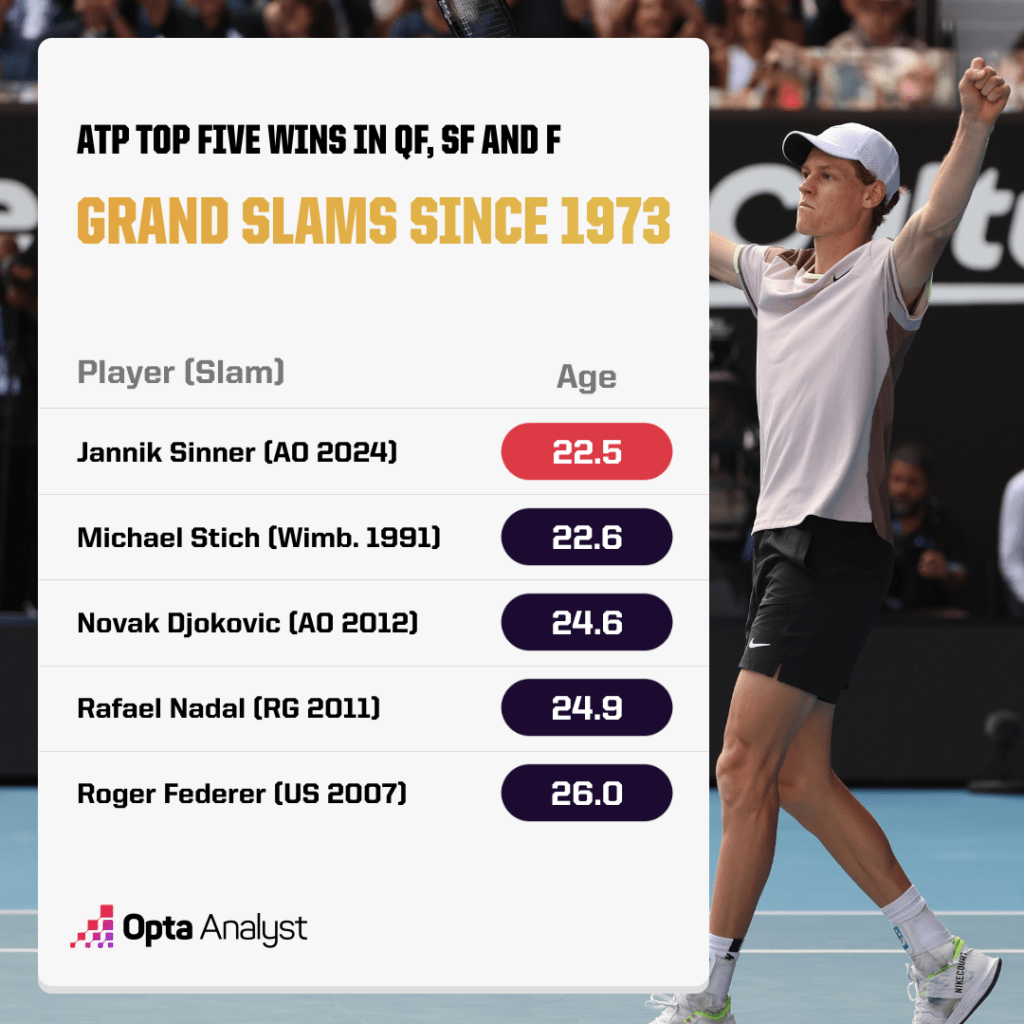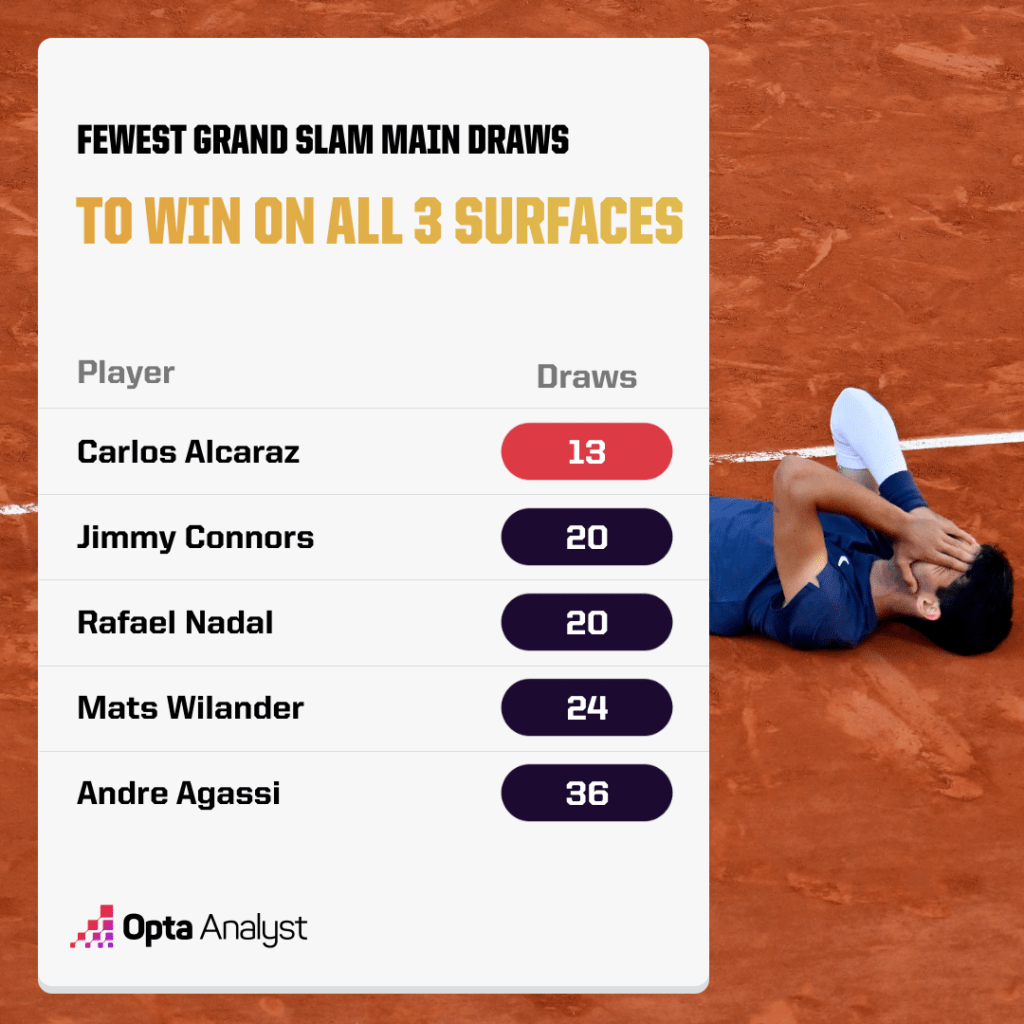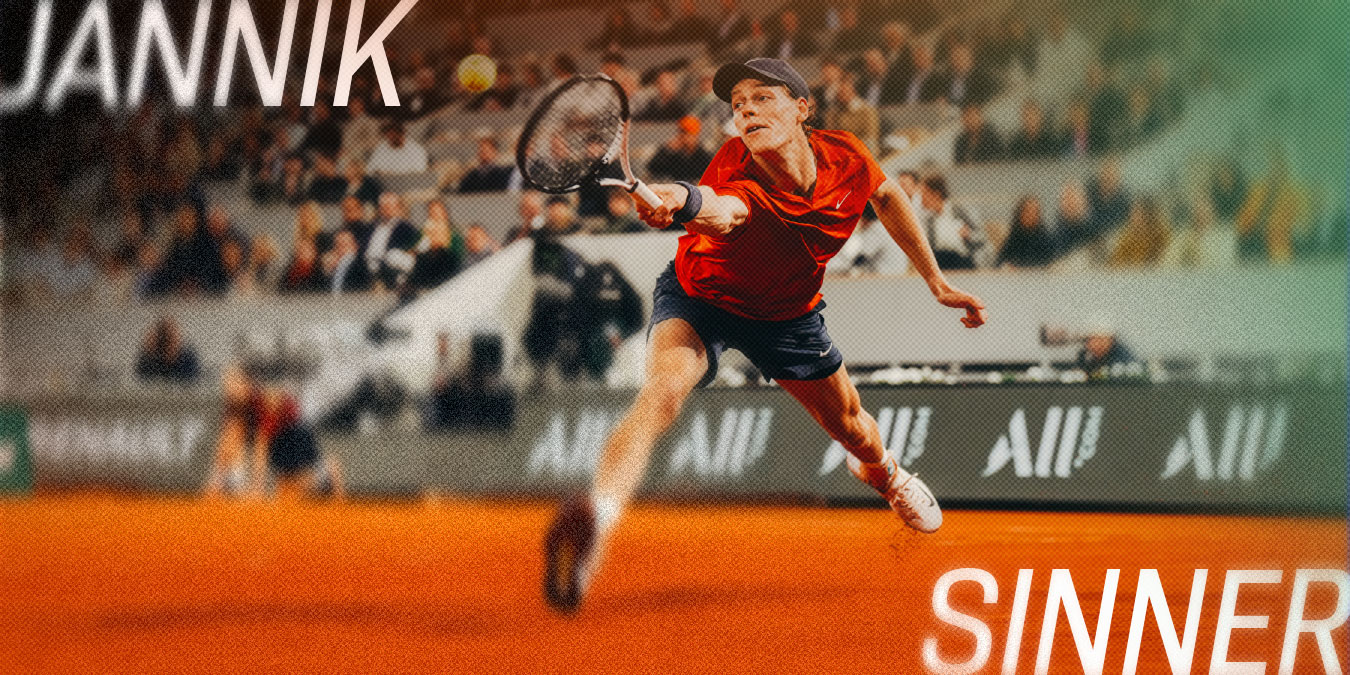Carlos Alcaraz and Jannik Sinner are achieving feats even the ‘Big Three’ didn’t manage at their ages. Is a new dawn finally here?
For a sport that looks so intently at its past and the lineage of those who came before, tennis is obsessed with its search for perspective and context.
Where does *insert grand slam winner* stack up amid the all-time greats? Who is the GOAT and on which surface? How weak or strong is the current era? … And that’s before we even get to Tennis Twitter, or is that Tennis X now?
The men’s singles at Roland Garros this year was palpably different, however. Amid the backdrop of Jannik Sinner claiming the No. 1 spot in the ATP rankings from 24-time Grand Slam winner Novak Djokovic, Carlos Alcaraz’s triumph over Alexander Zverev in Sunday’s final did not simply present an opportunity to catch a glimpse into the sport’s future, but rather a chance to accept its arrival.
The Eternal Shadow of the Big Three
Of all the astounding feats Roger Federer, Rafael Nadal and Novak Djokovic have managed to accomplish over their respective professional careers, there was one statistic that particularly stuck as we reached the business end in Paris last week.
Following Nadal’s opening-round exit to Zverev – only his fourth loss in 19 main-draw appearances (!) at the event – and Djokovic’s withdrawal due to a torn meniscus he suffered against Francisco Cerundolo in the round of 16, this year’s French Open became only the fourth grand slam event in the past 20 years where not one of the three reached the men’s singles semi-finals.
Two of the previous three occasions come with the proverbial asterisk; Nadal withdrew from the US Open in 2020 as reigning champion, before Djokovic defaulted against Pablo Carreño Busta in the round of 16 and was disqualified from the event.
Djokovic’s failure to meet vaccination requirements for non-US citizens saw his withdrawal from the 2022 US Open, and an underdone Nadal’s recovery from a torn abdominal muscle resulted in a total of eight matches from his last-16 loss to Frances Tiafoe until this year’s Brisbane International.
Two decades of sustained dominance over a sport can naturally tend to warp perspective, especially when a 37-year-old Djokovic can still manage to defeat the likes of Cerundolo with a torn meniscus. They’ve effectively broken the sport.
Yet, Sinner and Alcaraz are managing to accomplish feats and push the envelope in directions not even the Big Three could manage at their ages.
Sinner and Alcaraz Stake Their Claim
While Djokovic finished 2023 as the year-end No. 1 in the ATP rankings, the climax to last year’s Davis Cup underpinned change could be on the horizon.
Leading Italy’s charge to eventual Davis Cup victory, Sinner became the first player to ever defeat the irrepressible Djokovic twice in a single Davis Cup tie, and managed something none of the Big Three achieved on hard court – three calendar-year wins over the ATP’s No. 1 before turning 23.
To start 2024, Sinner emphatically backed up his title credentials at the Australian Open. In a highly-anticipated semi-final, Sinner kept Djokovic to zero break-point chances. The 22-year old became the first player to deny Djokovic – a photo-finish with Andre Agassi for the best return of serve the sport’s ever seen – a single break-point chance in a completed grand slam match.
Dramatically dotting the i with eventual victory over Daniil Medvedev in the Australian Open final at 22 years and 165 days old, Sinner became the youngest player to claim successive ATP top-five victories in the quarter-final, semi-final and final of a grand slam event since the rankings were first published in 1973.
This was a feat Federer (US Open 2007), Nadal (Roland Garros 2011) and Djokovic (Australian Open 2012) only managed in their respective primes.

Winning 22 of his opening 23 matches for the season, Sinner conceded a combined seven games in the semi-final and final at the Miami Open in March. Since the format’s introduction in 1990, only prime Nadal on clay has managed to concede fewer games (six – Monte-Carlo 2010) in the closing two matches of an ATP Masters 1000 event.
Becoming the first Italian since 1973 to hold the No. 1 spot in either the ATP or WTA rankings, Sinner has been the best player in the world in 2024, despite niggling injuries over the European clay swing.
Meanwhile, Alcaraz is showing historic prowess on all surfaces at his age. Alcaraz’s innate adaptability on various surfaces is otherworldly, and it’s only been underlined by his Roland Garros triumph over Zverev.
At an absurd 21 years and 35 days, Alcaraz became the youngest player to win grand slams at three different grand slam events. However, that he has achieved the feat on all three surfaces puts him in a category all of his own.
Alcaraz (13) has now taken the fewest grand slam main draws of any player in the Open Era to reach men’s singles finals on all three surfaces, with Nadal and Jimmy Connors (20) the next-fewest over that span.

Before his 21st birthday, with tournament victory in Indian Wells earlier this March, Alcaraz became the first Under-21 player to defend ATP Masters 1000 titles on multiple surfaces since the format’s introduction in 1990.
All of this is not to say the two are a chance to recreate the two decades of dominance the Big Three had over the sport of men’s tennis, let alone a certainty.
For the first time in a very long time, however, it truly feels like the dawn of a new era.
Enjoy this? Subscribe to our mailing list to receive exclusive weekly content. And follow us on Twitter too.
